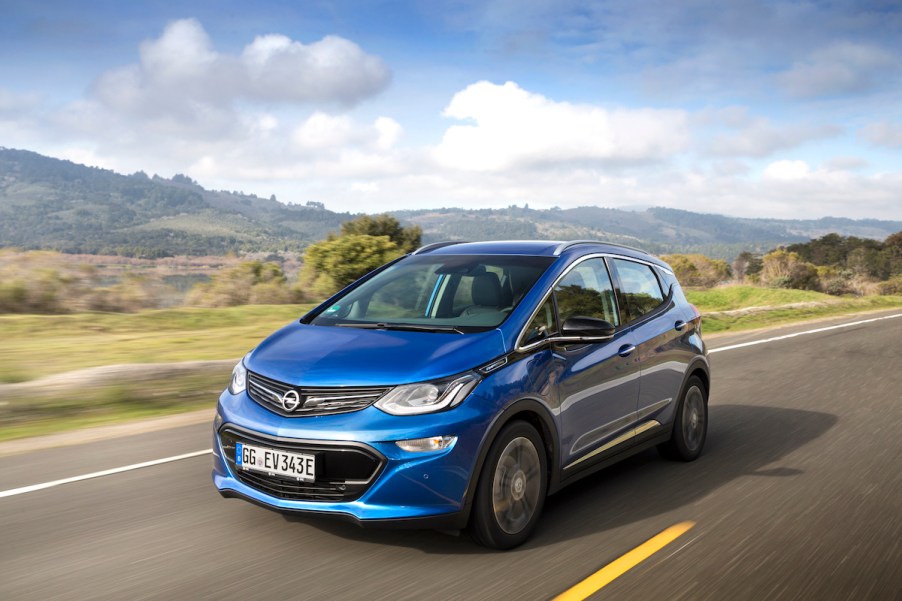
The 3 EVs With the Worst Range for Cold Weather Driving
One of the biggest concerns about buying an EV is range anxiety. That stress only intensifies for drivers in colder climates, where some EVs lose even more range. So if you’re shopping for an electric vehicle, you might want to know which ones to avoid. Here’s a look at the three EVs with the worst range for cold-weather driving.
1. The Opel Ampera-e suffered the worst range drop in cold weather

In 2020, the Norwegian Automobile Federation (NAF) conducted a real-world cold-climate range test. And the EV with the worst range in cold weather was the Opel Ampera-e. Because this test took place in Norway, the drivers used models available in Europe. That said, the Ampera-e is available in the United States as the Chevy Bolt.
The Ampera-e’s estimated range is 263 miles in ideal conditions. But in the Norwegian test, the electric hatchback got only 184 miles. That’s a drop of 79 miles or about 30% of its estimated range, Inside EVs reports.
2. The Tesla Model 3 didn’t fare much better in cold weather
The Tesla Model 3 is a popular EV in America and Europe. Unfortunately, its range suffers significantly in cold weather. The Model 3 boasts an estimated range of 348 miles, but in the NAF test, the car’s range number dropped to 251 miles. That’s a decrease of 97 miles, steeper than the Ampera-e’s drop.
However, because the Tesla starts with much more range than the Ampera-e, the Model 3’s percentage drop is smaller. With a drop of 97 miles of range, the Model 3 loses about 28% of its original range estimate. That’s a significant loss, but because the Model 3 still got 251 miles in cold weather, it can still be an appealing choice for EV shoppers.
3. The Mercedes EQC also saw a huge drop in driving range
Unfortunately for Mercedes fans, the EQC also showed a significant decrease in cold-weather driving range. But unlike the Tesla Model 3, the EQC doesn’t start with a long range. It has an estimated range of only about 251 miles. So even in the best-case scenario, the Benz has as much range as a Model 3 driven in cold weather.
However, when the EQC is also in cold weather, its range decreases to 191 miles. That’s a drop of about 60 miles or 25%.
EV range in cold weather could improve
Because the EV market is evolving quickly, many new electric vehicles have entered the market since NAF conducted its test in 2020. So it’s difficult to say how newer EVs, such as the Rivian R1T, would perform in a similar cold-weather test. On top of that, because automakers are striving to solve this cold-weather range issue, newer EVs could be more efficient, so the results of this Norwegian test might not be accurate for the latest models.
But that doesn’t mean you should ignore the results of this Norwegian test. It shows some clear differences in cold-weather driving range among makes and models. Thus, it can give car shoppers a general idea of where certain EVs stand. This test can also serve as a baseline to see how much EVs can improve in the future.


